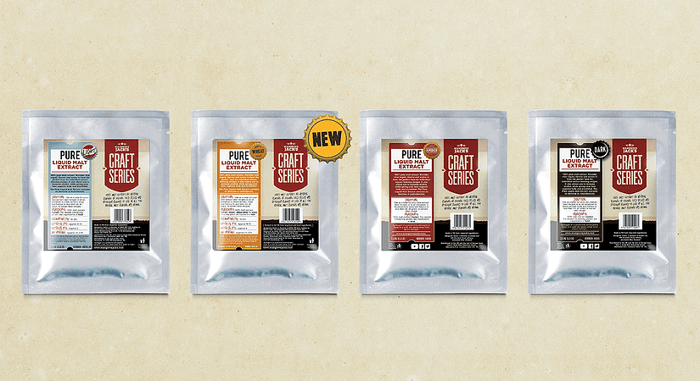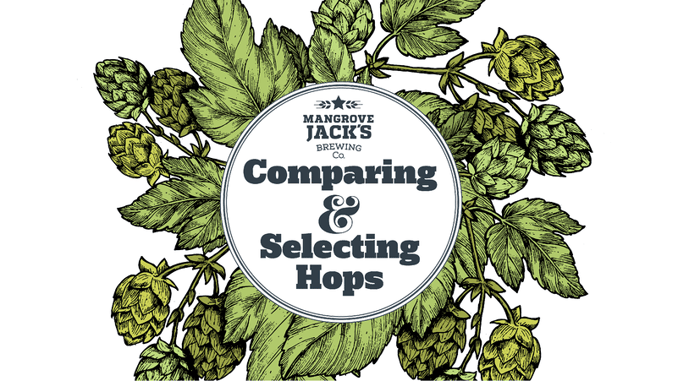Malt extract is a great ingredient for beginners and seasoned homebrewers alike. Let’s look at what it is, how it’s made and how you can make the most of your homebrew using our Liquid Malt Extract range.
What is malt extract?
According to the American Homebrewer’s Association, malt extract can be defined as “concentrated sugar extracted from brewing-grade malted barley.” It comes in both liquid or dry form - liquid malt extract (LME) has a similar consistency to molasses whereas dry malt extract (DME) is like a fine powder.
The types of malt extract differ depending on the grains that are used when making it. Here at Mangrove Jack’s, we have four LME’s; Light, Dark, Amber and, our newest addition, Wheat.
How is liquid malt extract made?
The process of making malt extract is very much like the start of an all-grain brew day. In simple terms, it is made by mashing and concentrating wort. Grains are mashed in the usual way in order to create wort, which is then heated gently, causing the water content to evaporate. The result is a concentrated thick syrup.
This process of concentrating the wort via heat causes the wort to darken. The wort is often placed under a vacuum so that lower temperatures can be used to remove the excess water.
What makes liquid malt extract so great?
Malt extract is great for beginner homebrewers as it makes producing beer much faster in comparison to the all-grain method. It also eliminates some of the variables like hitting mash temperatures and volumes. For more experienced brewers, it can be used to supplement sugars and flavours and assist in reaching target gravity if your brew has fallen short.
Many brewers will make beers from just malt extract or malt extract with steeped specialty grains to add extra colour and flavour. Malt extract beers can be brilliant and have proven, at many competitions, to be capable of competing with all-grain beers.
How can liquid malt extract be used?
There are many reasons to keep some malt extract present in your home brewery. Those reasons include;
Making a Yeast Starter
A yeast starter is basically a very small batch of wort used to grow enough viable yeast cells to ferment your beer from a liquid yeast pack. By using a starter you are trying to ensure a healthy fermentation, avoiding problems like off-flavours or a slow start, leaving your wort susceptible to spoilage organisms.
Making a yeast starter with malt extract makes life much easier for brewers as it means that you don’t need to create the wort from scratch (having to mash your chosen grains for an hour) every time you want yeast to pitch. Instead, you can heat water, add your malt extract, boil this mixture, cool it to pitching temperature and then add your yeast. You also won't need to add yeast nutrient like you would if you used dextrose to make a starter.
Adjusting Gravity Mid-Brew
For many of us, brewing can be a ‘see what you get’ exercise. We plan our recipe, we know how we would like it to turn out but then on the day it’s in the hands of the homebrew gods as to whether we hit those numbers or not. It doesn’t have to be like that though. With a little bit of planning you can make adjustments to your gravity during your brew session. This is where it can really come in handy to have some malt extract on hand.
Brewing Part-grain
If you’re an all-grain brewer, you may choose to have malt extract in the brewery for those days when you want to brew but just haven’t got the time for a full mash/sparge/boil/cooling stage. What is simpler than an extract or part grain brew-day? It can produce great beer too (if you follow your normal good practices) and is a great way to keep your stocks up between all-grain brew days.
Next time you brew, why not try one of our Liquid Malt Extracts to boost your brew!
To view our full range of Liquid Malt Extract, click here. If you have any questions or comments let us know in the comments section below or email us at info@mangrovejacks.com.




